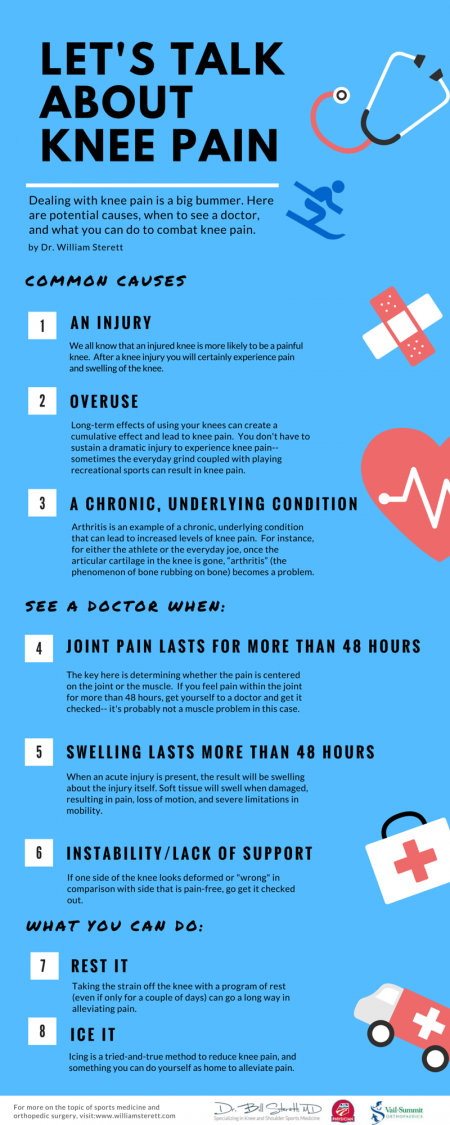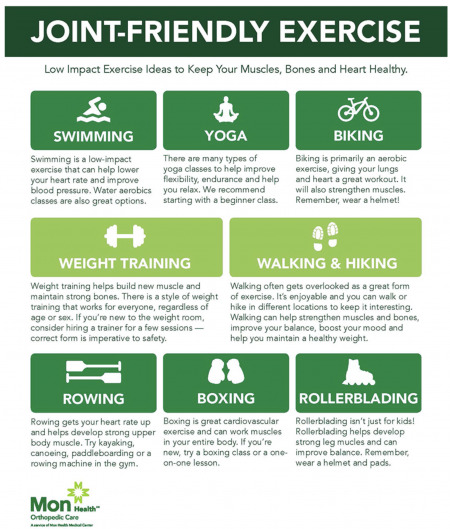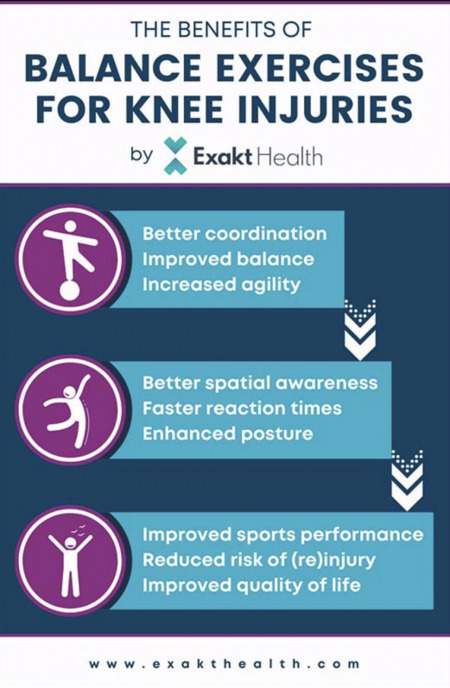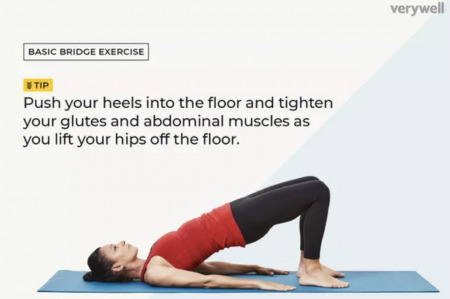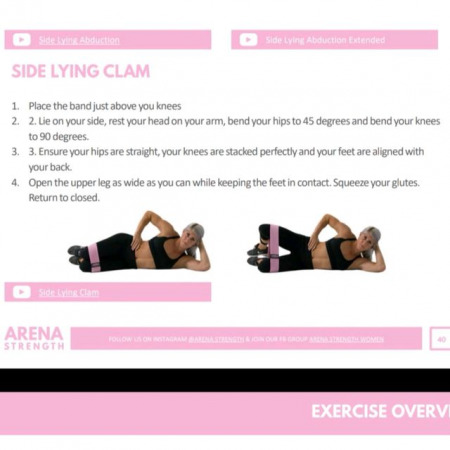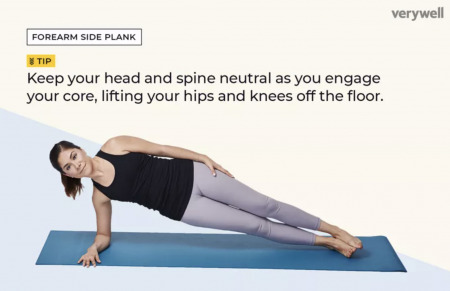Okay, chicas, it’s time for a check-in.
Two weeks ago, I published a piece on how to start a strength-training routine if you’re a beginner in the fitness world, and I’m curious to know who’s out there crushing it.
Hopefully, the article sparked a little “gymspiration” and now you’re stoked to rack up those squats (they get easier, I promise). But if my check-in just elicits crickets, it’s still not too late to start. Spring is finally here, the sun is smiling down at us, and it’s time to get into the fitness spirit.
Unfortunately for me, my version of springing into action can quickly become overtraining. While I’m a competitive person on race day, my primary motivation to run and work out is to protect my mental health; I need those endorphins to feel whole. And sometimes, my dopamine-seeking brain tricks me into thinking that if some is good, more is better – a mindset that makes my joints cringe.
So now, I’m nursing a little niggle in my knee that I think came from overdoing it on the leg press. Or maybe I ran too many miles this week and my body is begging me to chill. Regardless, my right knee is a bit cranky, and I don’t want that crankiness to become a screaming injury. So, I have no choice but to cut back on the high-impact activity and replace it with something, well, gentler.
As much as I’d love to throw myself a pity party, I know I’m one of the lucky ones; I rarely grapple with injury. But knee issues are incredibly common, and not just in athletes or gym-goers. While sudden strains or overuse are common causes of knee problems, many are the result of the aging process and continued wear and tear on the knee joint. As much as we’d like to think that we’re invincible, our bodies become less durable as we get older.
Such is one of life’s cruel paradoxes: even when we’re doing all the right exercises to build strong hearts and improve bone density, our bodies throw us for a loop and make it more challenging to do them. Really seeing results from dominating your deep squats? Here, let’s throw in some knee pain so you have to stop squatting! What about jumping rope – that was your chosen form of cardio? Looks like you’ll have to take a break from that, too!
In the grand scheme of things, though, the world is our oyster when it comes to workouts we can do while rehabbing our knees. Plus, this process of navigating injury, of overcoming adversity, forces us to become more creative: every new skill we learn is another tool to add to our exercise arsenal.
If you’re dealing with a nagging knee issue like I am, you’re probably itching to learn how to feel the cardio burn without plunging into further pain. But before you simply replace one form of pounding for another, it’s important not to ignore what’s causing your knee problem in the first place. As a complex joint, the knee is susceptible to various injuries that each require a unique treatment approach; while many common issues can be treated through rehabilitation exercises, some injuries require more advanced medical attention and even surgery.
Don’t fret just yet! The likelihood is that if you address your knee issue early, you can have your cake and eat it, too — that is, enjoy the sweet endorphins of exercise while still helping your knee to heal. The key ingredients to this recovery recipe? A little motivation and a whole lot of patience (sigh, patience).
But don’t take my word for it — take the word of the physical therapy and fitness experts we consulted to give us all some guidance. Of course, check with your doctor before you embark on any new exercise plan, especially if you suspect a serious injury. But once you’ve gotten the go-ahead, stick with these knee-protecting pointers, and you (and I) will be well on our way to rocking our next workout routine.
Choose Low-Impact Cardio
Aching to bust out those endorphin-boosting moves? “If you have bad knees, start with a low-impact activity like swimming or cycling,” recommends Lovelia Horn, P.T., a physical therapist from Springfield, Ill. “These activities are gentle on the joints and still provide a good workout.”
For the cardio crushers out there, we wrote an article in February on the best low-impact workouts anyone can do, even with bad backs and creaky knees. If your knees have you taking a break from your treadmill sprints, hop onto the elliptical machine, spin bike, swimming pool, or yoga mat for a high-intensity power hour sans the pounding. Check out our article on low-impact hiit workouts for specific ideas.
“As your knees get stronger, you can start to add in more challenging activities like squats and lunges,” Horn says. “Just make sure you’re using proper form and listening to your body. If you experience any pain or discomfort, stop immediately.”
Strengthen And Stabilize Your Knee
While you’re choosing cardio that protects your patella from pounding, there are a few ways you can improve your knee strength and stability, says Horn.
“First, focus on exercises that activate the glutes and hamstrings. These muscles help to stabilize the knee joint and protect it from excessive stress,” Horn explains. “Second, make sure you’re doing plenty of balance exercises. These help improve proprioception (the body’s sense of where it is in space) and can help prevent knee injuries.”
Need a few examples? According to Caroline Grainger, a certified personal trainer, step-ups and wall squats are superb options.
“Step-ups are pretty simple. You’ll need a box to step up onto, with the height depending a lot on your own height and knee strength,” Grainger says. “Simply step up onto the box with one foot, then lift the other up into the air. If you want to go for high intensity, you can step higher or add a knee drive to the end of the motion.”
“Wall squats are done by pressing your back against a wall and lowering yourself, ideally until your knees are at a 90-degree angle, before coming back up,” Grainger explains. “These can be adapted by putting your back against a yoga ball to ease the up-and-down motion.”
Improve Other Weaknesses
Of course, strengthening the knee is only one piece of the puzzle, says Brett Durney, a personal trainer and running coach from London.
“Although it is specifically with the knees we are talking about here, most knee conditions are a result of either weak glutes or mobile/unstable ankles coupled with weak core strength,” Durney explains. “If we can work to address all of these areas, we can significantly improve the knee support through improved strength, which therefore improves stability and enhances proprioception.”
To strengthen the glutes and the core, Durney recommends three key exercises for each muscle group.
For The Glutes:
Resistance Band Side Steps
“This works the glute medius, which helps with knee and ankle alignment,” Durney says.
Bodyweight Pelvic Bridge
“This helps activate the glute max, which provides stability and strength through hip extension,” he says.
Side Lying Clam
According to Durney, “This helps again with glute medius activation and strength.”
For Core Strength:
Eight-Point Plank
“This helps with overall core strength and stability,” Durney says.
Dead Bugs
“This also helps with core strength and stability,” he says.
Side Plank
“This helps with oblique strength,” Durney explains.
Start With Closed-Chain Exercises
According to Durney, an important consideration when exercising with knee pain is to start with closed-chain exercises.
“As a simple explanation, closed chain exercises are where your feet do not leave the ground and remain in contact with the ground at all times,” Durney says. “Open chain exercises are where your feet will leave the ground and float through the air before landing again.”
“A great example of this is a lunge,” Durney explains. “A closed-chain lunge would be where you do not remove your feet from the floor — you simply complete the lunge through its range of motion without taking a foot off the floor, in a split-stance position. An example of an open-chain lunge would be walking lunges, where you complete a set of lunges across a set distance,” he says.
For those of us with knee issues, prioritizing slow, steady progress — that begins with closed-changed movements — can help us get off the ground running again.
“I am by no means saying that you cannot complete open-chain exercises with bad knees,” notes Durney. “But I would advise that you start closed-chain first of all — build up your confidence and strength and stability — and then progress to harder open-chain variations.”
And, as in anything, remember the age-old mantra: strive for progress, not perfection.

Are you grappling with knee issues? Have you successfully recovered from a knee injury? Share your advice in the comments!
Check These Out For More Helpful Fitness Tips:

